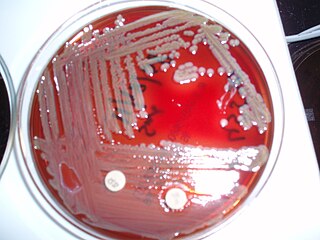
El Tatio is a geothermal field with many geysers located in the Andes Mountains of northern Chile at 4,320 metres (14,170 ft) above mean sea level. It is the third-largest geyser field in the world and the largest in the Southern Hemisphere. Various meanings have been proposed for the name "El Tatio", including "oven" or "grandfather". The geothermal field has many geysers, hot springs, and associated sinter deposits. These hot springs eventually form the Rio Salado, a major tributary of the Rio Loa, and are a major source of arsenic pollution in the river. The vents are sites of populations of extremophile microorganisms such as hyperthermophiles, and El Tatio has been studied as an analogue for the early Earth and possible past life on Mars.

The voiced labiodental nasal is a type of consonantal sound. The symbol in the International Phonetic Alphabet that represents this sound is ⟨ɱ⟩. The IPA symbol is a lowercase letter m with a leftward hook protruding from the lower right of the letter. Occasionally it is instead transcribed as an with a dental diacritic: ⟨m̪⟩.

Rhizobium is a genus of Gram-negative soil bacteria that fix nitrogen. Rhizobium species form an endosymbiotic nitrogen-fixing association with roots of (primarily) legumes and other flowering plants.

The Hyphomicrobiales are an order of Gram-negative Alphaproteobacteria.

The Rhodobacteraceae are a family of proteobacteria in the order Rhodobacterales within the alpha subgroup. Like all proteobacteria, they are gram-negative. It contains chemoorganotrophs and photoheterotrophs bacteria. Many occur in aquatic habitats.

The Oceanospirillales are an order of Proteobacteria with ten families.
In linguistics, a denti-alveolar consonant or dento-alveolar consonant is a consonant that is articulated with a flat tongue against the alveolar ridge and the upper teeth, such as and in languages such as French, Italian and Spanish. That is, a denti-alveolar consonant is (pre)alveolar and laminal rather than purely dental.

Ulmus elongataL. K. Fu & C. S. Ding , also known as the long raceme elm in the US, is a deciduous tree endemic to broadleaf forests in the eastern provinces of China.

The family Flavobacteriaceae is composed of environmental bacteria. Most species are aerobic, while some are microaerobic to anaerobic; for example Capnocytophaga and Coenonia.
The politics of Shanxi Province in the People's Republic of China is structured in a dual party-government system like all other governing institutions in mainland China.

The China women's national volleyball team represents the People's Republic of China in international volleyball competitions and friendly matches governed by Chinese Volleyball Association. They are one of the leading and most successful squads in women's international volleyball, having won ten championships titles in the three major international competitions of volleyball, including five World Cups, two World Championships and three Olympic titles. The current head coach is Cai Bin.

Ophioparma is a genus of crustose lichens in the family Ophioparmaceae.

Mesorhizobium is a genus of Gram-negative soil bacteria. At least one, the nitrogen fixing species, Mesorhizobium loti, forms symbiotic root nodules with plants in the genus Lotus. Strain MAFF303099 of M. japonicum has been fully sequenced.
Alcanivorax borkumensis is an alkane-degrading marine bacterium which naturally propagates and becomes predominant in crude-oil-containing seawater when nitrogen and phosphorus nutrients are supplemented.
Alcanivorax dieselolei is a species of alkane-degrading bacteria. Its genome has been sequenced. It is halophilic, aerobic, Gram-negative, non-spore-forming, catalase- and oxidase-positive, motile and rod-shaped. Its type strain is B-5T.
Alcanivorax pacificus is a pyrene-degrading marine gammaprotobacterium. It is of the genus Alcanivorax, a group of marine bacteria known for degrading hydrocarbons. When originally proposed, the genus Alcanivorax comprised six distinguishable species. However, A. pacificus, a seventh strain, was isolated from deep sea sediments in the West Pacific Ocean by Shanghai Majorbio Bio-pharm Technology Co., Ltd. in 2011. A. pacificus’s ability to degrade hydrocarbons can be employed for cleaning up oil-contaminated oceans through bioremediation. The genomic differences present in this strain of Alcanivorax that distinguish it from the original consortium are important to understand to better utilize this bacteria for bioremediation.
Alcanivorax mobilis is a Gram-negative, hydrocarbon-degrading and motile bacterium from the genus of Alcanivorax which has been isolated from deep-sea sediments from the Indian Ocean.

Paleotempestology is the study of past tropical cyclone activity by means of geological proxies as well as historical documentary records. The term was coined by American meteorologist Kerry Emanuel.












